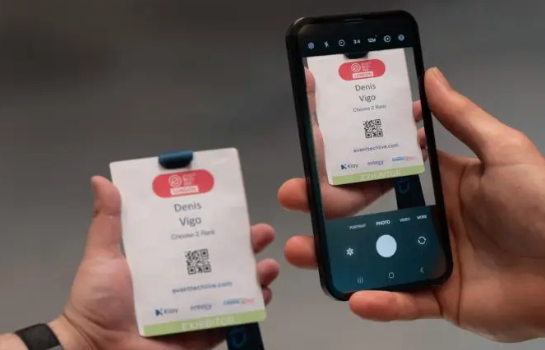
The events industry is evolving, and one of the most exciting innovations leading the way is smart badge technology. Gone are the days when badges were simply paper name tags. Today, smart badges combine advanced features such as RFID, NFC, QR codes, and interactive displays, offering a multifunctional tool that significantly enhances the event experience for both organisers and attendees.
In this post, we’ll dive into how smart badges are changing event management, the technology behind them, their advantages for organisers and participants, and what the future holds for this innovative solution.
The Shift from Paper Badges to Smart Badges
Traditional paper badges have been a staple at events for years, but as events have become more complex and larger in scale, the need for a more dynamic solution became evident. The introduction of electronic badges at tech conferences and hacker events set the stage for today’s smart badges. These modern badges go beyond just displaying a name—they now integrate seamlessly with event management systems, streamline attendee check-ins, and even help collect valuable real-time data.
Recent advances have taken smart badges to the next level. Some now feature electronic displays, touch-sensitive interfaces, and gamified elements, making them more engaging for attendees. This shift from static, paper-based badges to interactive, high-tech devices is reshaping how identification and engagement are handled at events.
Key Technologies Behind Smart Badges
- RFID & NFC
Radio Frequency Identification (RFID) and Near Field Communication (NFC) are the backbone of many smart badges. These technologies enable contactless check-ins and secure access control. When attendees tap their badge on a reader, the system instantly verifies their credentials, eliminating long lines and waiting times. - QR Codes
QR codes integrated into smart badges provide an easy way to bridge the gap between the physical and digital worlds. By scanning the code, attendees can instantly access personalised schedules, networking profiles, or promotional content directly on their smartphones. - Interactive Displays & Data Collection
Some smart badges come with small electronic displays that show dynamic content such as session updates or personalised greetings. These badges also gather real-time data on attendee behavior, offering valuable insights that can help measure engagement and improve future events.
Benefits for Organisers and Attendees
For Organisers:
- Efficient Check-Ins: Automated, contactless check-ins reduce wait times and improve security.
- Instant Analytics: The data collected from smart badges provides valuable insights into attendee movement and session popularity, helping organisers make quick decisions and plan future events more effectively.
- Enhanced Security: Smart badges use encrypted credentials and unique identifiers to ensure only authorised individuals can access restricted areas.
For Attendees:
- Seamless Experience: Attendees enjoy a smooth check-in process and immediate access to personalised content and networking opportunities.
- Interactive Engagement: From gamified challenges to light cues, smart badges prompt attendees to engage in fun and interactive activities, making the event more memorable.
- Personalised Navigation: Customised badges with session details, personal preferences, and real-time updates help attendees navigate the event with ease.
Real-World Uses and Emerging Trends
Events like DEF CON and the Electromagnetic Field (EMF) festival have long utilised smart badges to provide secure, interactive, and engaging experiences. Today, major conferences and trade shows across the globe are adopting this technology to elevate their events and offer attendees a cutting-edge experience.
Exhibitors are using the data gathered from smart badges to improve lead retrieval strategies, while sponsors are benefiting from increased brand exposure as their logos and messages are prominently featured on the badges.
Looking Forward: The Future of Smart Badges
As we head into 2025, smart badge technology will continue to evolve. We can expect to see:
- IoT Integration: Enhanced connectivity between badges and other event devices, creating a fully interconnected event environment.
- Biometric Security: Increased use of biometric features, such as fingerprint or facial recognition, for added security and access control.
- Augmented Reality (AR): Some badges may soon support AR experiences, providing attendees with immersive ways to interact with event content.
- Sustainability Focus: Eco-friendly materials and energy-efficient designs will become more prevalent, helping to reduce waste and lessen the carbon footprint of events.
Smart badge technology is revolutionising the event industry, offering a modern solution to age-old challenges. By integrating this technology into their events, organisers can provide a more engaging, secure, and efficient experience for everyone involved.













